Self-portrait by Benjamin West, 1170 original, 1776 copy.
(Photo:Wikimedia Commons, Public domain)
The American painter Benjamin West lived between two worlds.
He experienced the American Revolution as an expatriate in the mother country.

Self-portrait by Benjamin West, 1170 original, 1776 copy. (Photo:Wikimedia Commons, Public domain)
West’s birth across the pond, however, did not hamper his swift rise through the artistic ranks.
Read on to learn more about West and his artistic career.
A Childhood in the American Colonies
The Benjamin West House in Pennsylvania, drawn in 1837.
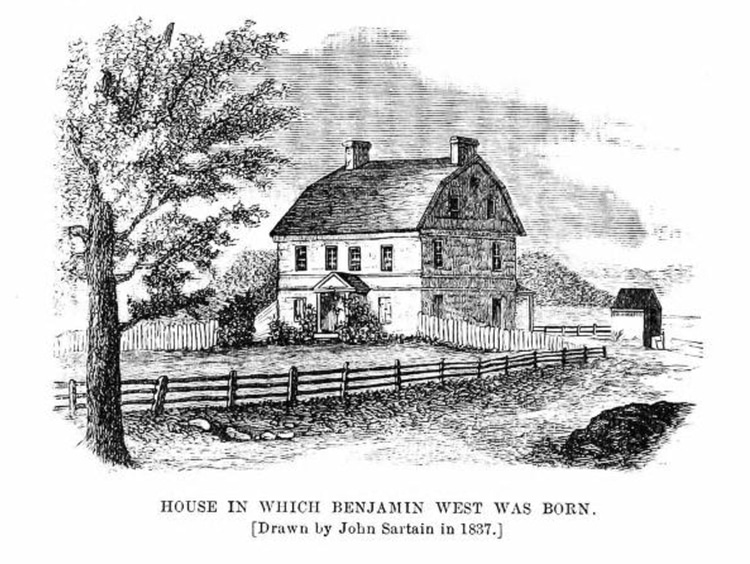
The Benjamin West House in Pennsylvania, drawn in 1837. (Photo:Wikimedia Commons, Public domain)
Largely self-taught, young West showed promise at a very early age.
By his late teens, he was taking portrait commissions around Pennsylvania.
His wealthy patron, William Henry, had suggested the young man paint the ancient philosopher Socrates.
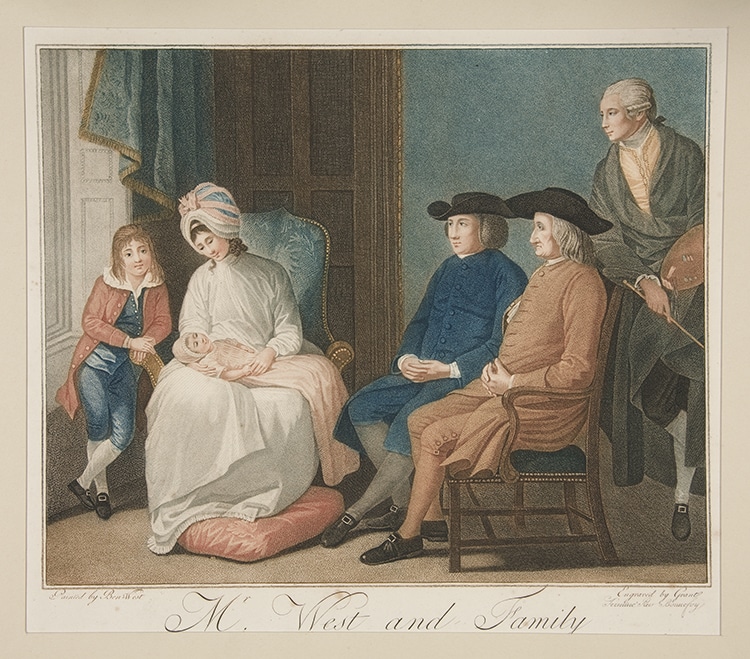
The West family, by an unknown engraver after 1779. (Photo:Yale University Art Gallery, Public domain)
Completed in 1756,The Death of Socrateswas evidence of a revolutionary young painter.
The painting won him the attention of the Philadelphia intelligentsia.
While living in the city, the young artist met John Wollaston, an English portraitist.
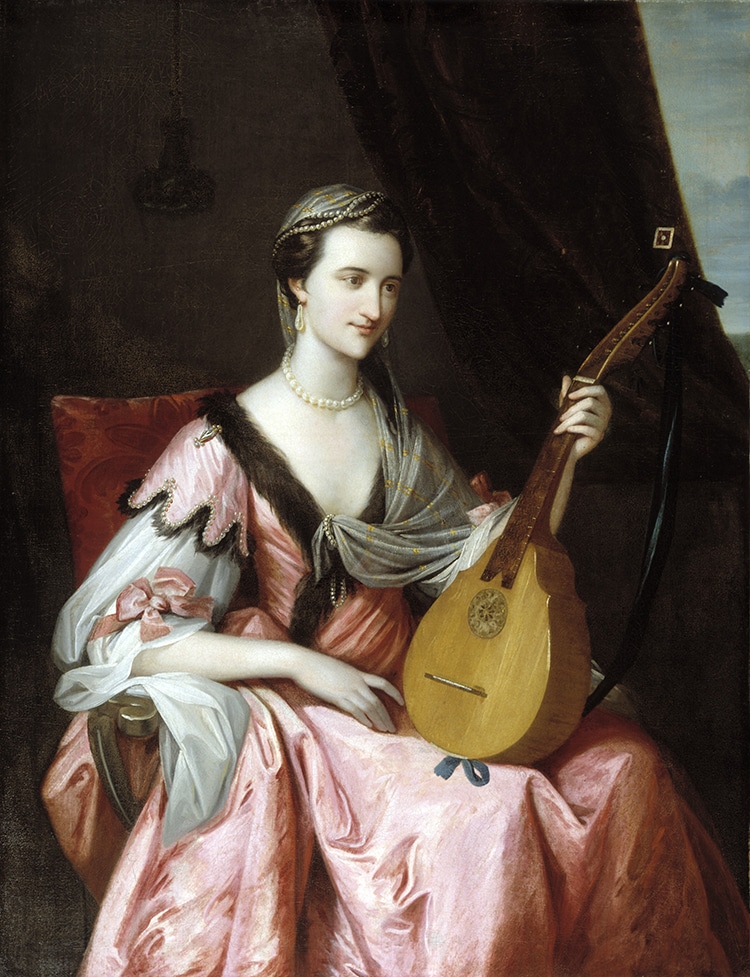
“Mary Hopkinson,” by Benjamin West, circa 1764. This portrait was painted from a miniature during West’s early years in London. (Photo:Smithsonian American Art Museum, Public domain)
He learned from Wollaston’s style and skill for painting fabric.
West’s wealthy city connections funded his continuing education by sending him abroad on a Grand Tour in 1760.
TheGrand Tourwas traditional for young European noblemen and aspiring artists.
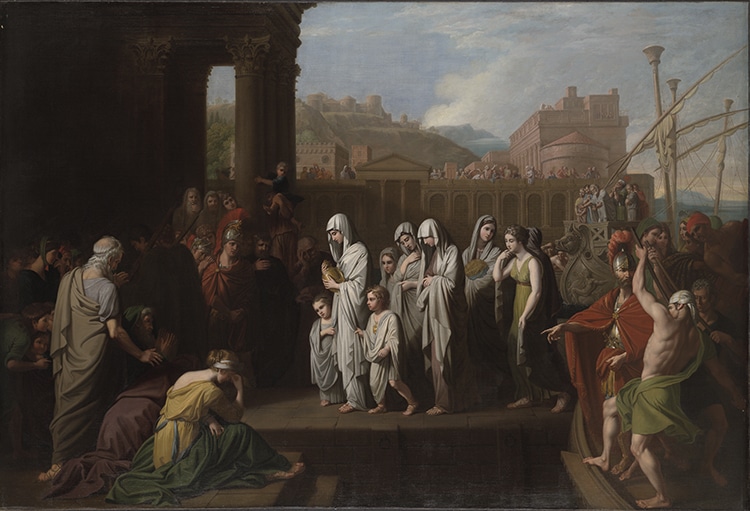
“Agrippina Landing at Brundisium with the Ashes of Germanicus,” by Benjamin West, 1768. (Photo:Yale University Art Gallery, Public domain)
He would later draw upon these experiences as a pioneer of the art movement known asNeoclassicism.
Voyage to England
The West family, by an unknown engraver after 1779.
(Photo:Yale University Art Gallery, Public domain)
In 1763, West traveled to London.
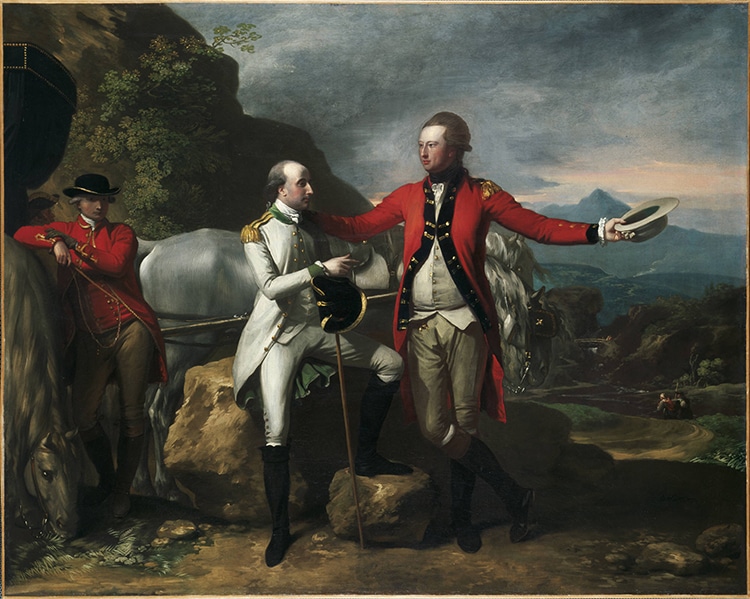
“Two Officers and a Groom in a Landscape,” by Benjamin West, 1777. (Photo:Wikimedia Commons, Public domain)
There, his talent for history painting flourished.
He quickly gained a glowing reputation in artistic and courtly circles.
He hobnobbed with bishops and literary luminaries such as Dr. Samuel Johnson.

“The Death of Nelson”, by Benjamin West, 1806. (Photo:Wikimedia Commons, Public domain)
He painted both Christian and classical scenes while supporting himself with portrait commissions.
It was an exciting time for art in London, as history painting was developing as a genre.
King George III was also a devoted patron of the arts.
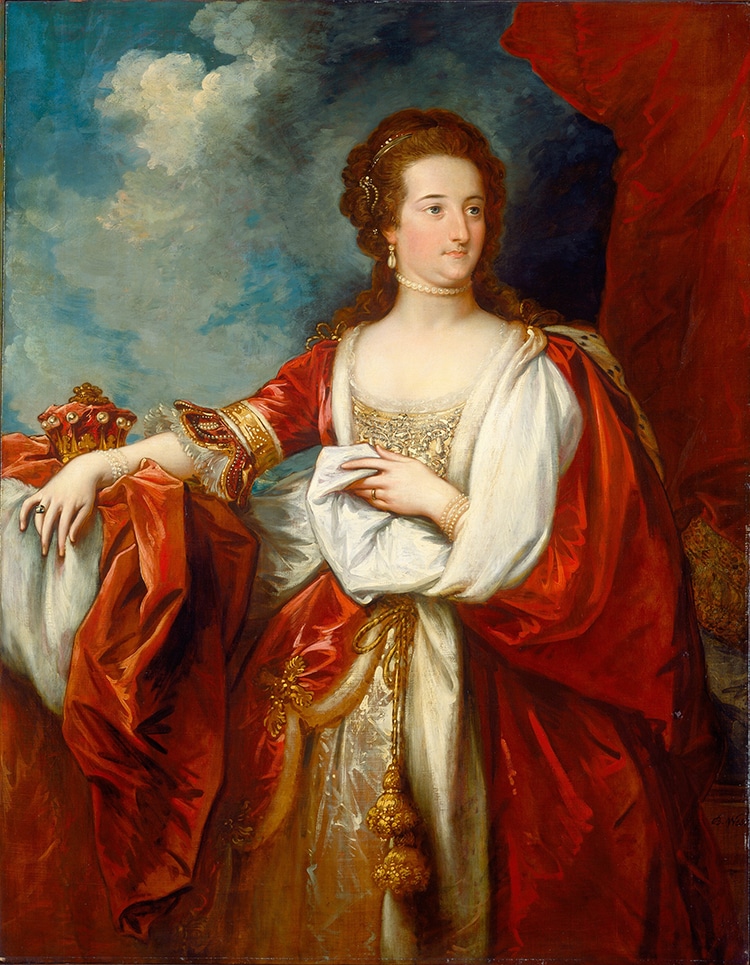
“Elizabeth, Countess of Effingham,” by Benjamin West, circa 1797. (Photo:National Gallery of Art, Public domain)
In 1769, West delivered his first Royal commission,The Departure of Regulus.
Mary Hopkinson, by Benjamin West, circa 1764.
This portrait was painted from a miniature during West’s early years in London.
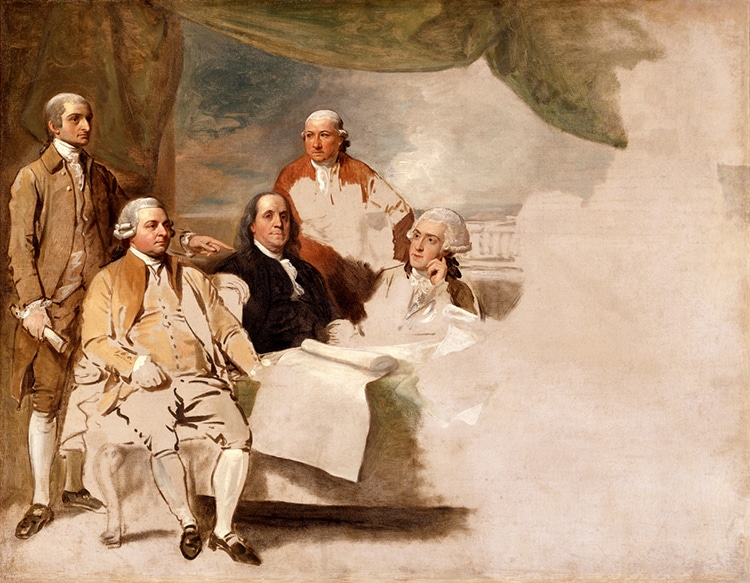
“American Commissioners of the Preliminary Peace Agreement with Great Britain,” by Benjamin West, 1783-1784. (Photo:Wikimedia Commons, Public domain)
The Royal Academy was founded in 1768, and West would take over its presidency in 1792.
After his first commission, West became the king’s preferred painter.
He delivered 60 works to the monarch over the period between 1768 and 1801.
Historical Paintings
Agrippina Landing at Brundisium with the Ashes of Germanicus, by Benjamin West, 1768.
The general is the central figure in the composition.
Not strictly factual,The Death of General Wolfewas meant to tell a moral story.
Such idealized depictions of history were thought to be a Hight Art, nobler than other forms of painting.
Two Officers and a Groom in a Landscape, by Benjamin West, 1777.
These paintings also demonstrated ideal characteristics such as loyalty and bravery.
The central female figure embodies stoicism, self-sacrifice, and patriotism.
Commissioned by the Archbishop of York, the neoclassical masterpiece also greatly appealed to the king.
The Death of Nelson, by Benjamin West, 1806.
He trained generations of American artists who studied in London.
While theking’s patronagepersisted through the American Revolution, West was eventually eclipsed as his sole favorite.
The two maintained a close friendship, however.
Attributes of classical architecture or historical painting appear in the background.
West had come a long way from paintingPennsylvania localsto the titled peers of England.
However, he combined his past with his present in one of his later works.
The portrait of his friend Benjamin Franklin shows the founding father flying a kite as he famously discovers electricity.
A historical painting and portrait combined, it is emblematic of West’s storied career.
West passed away in London in 1820 at the age of 81.
He left behind a rich legacy of paintings, pupils, andneoclassicism.
As an American in London, West navigated a period of trans-Atlantic change both politically and artistically with style.
American Commissioners of the Preliminary Peace Agreement with Great Britain, by Benjamin West, 1783-1784.
(Photo:Wikimedia Commons, Public domain)
Related Articles:
Who Is Camille Pissarro?